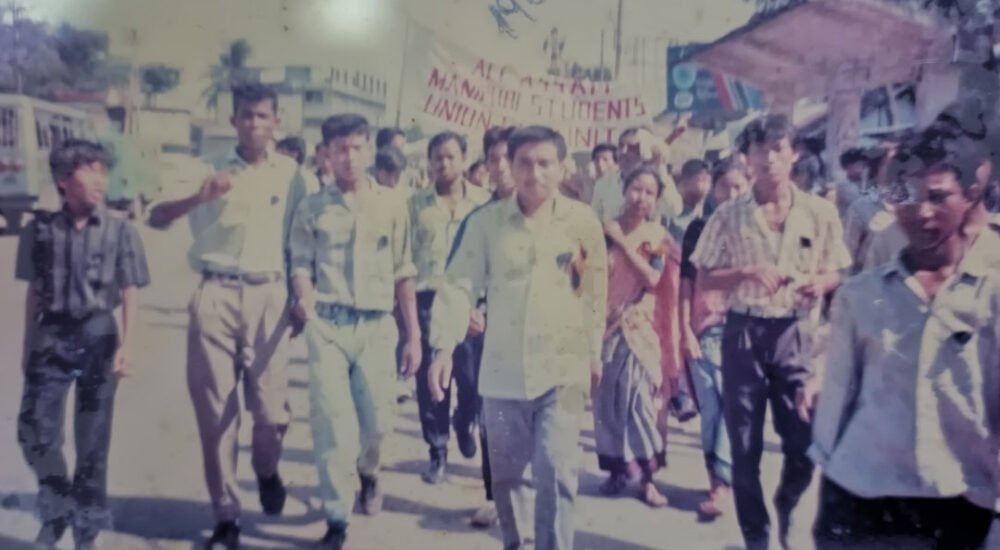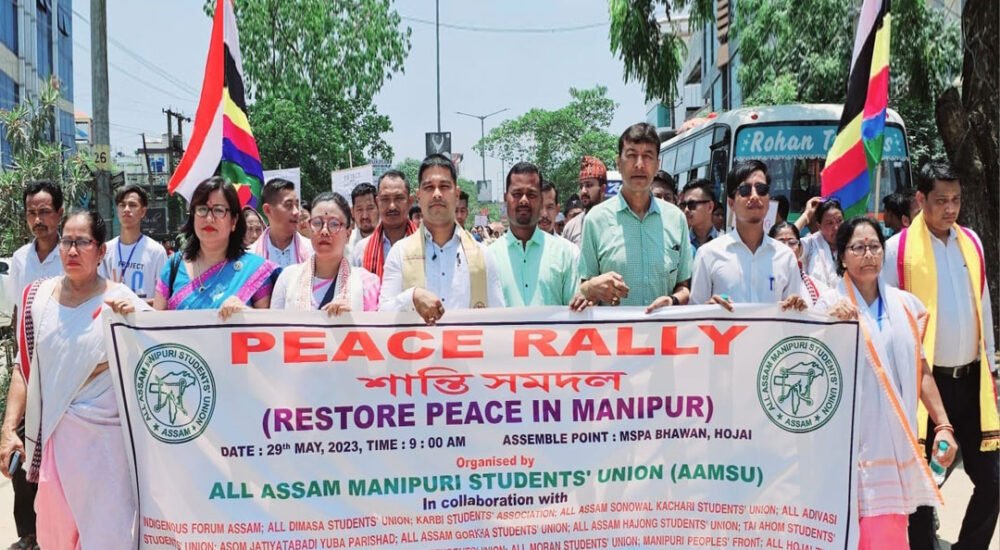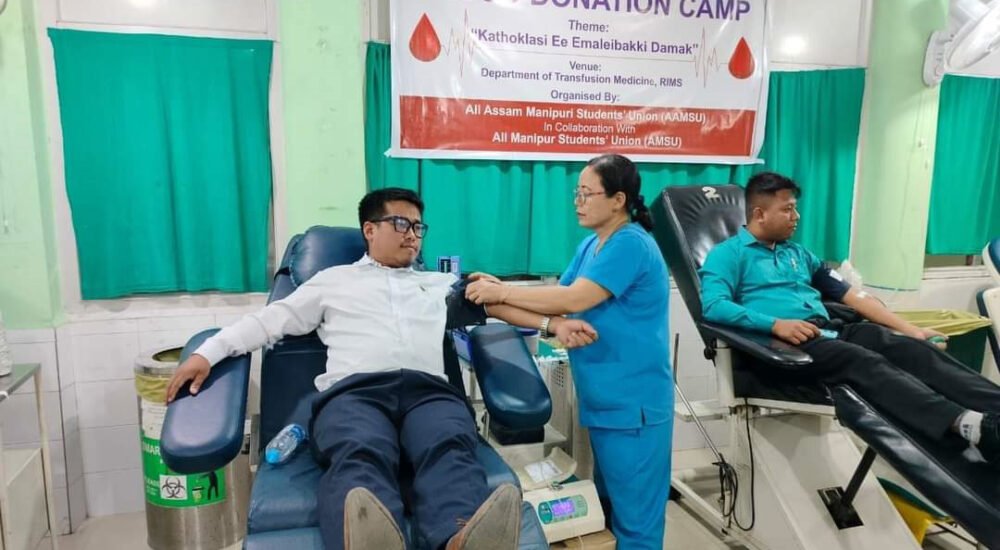Introduction: In 1989, the All Assam Manipuri Students Union (AAMSU) organized a historic rally in…

AAMSU’s 1989 Movement: Sit-in Protest and Community Meeting for Manipuri Rights
Historical Background:
In 1989, the All Assam Manipuri Students Union (AAMSU) undertook a significant movement to address two critical issues affecting the Manipuri community in Assam. The movement focused on:
- Protesting against the Bishnupriya issue.
- Demanding the inclusion of the Manipuri language in the 8th Schedule of the Indian Constitution.
Sit-in Protest at Janata Bhawan, Guwahati:
- Location: In front of Janata Bhawan’s Last Gate, Guwahati, Assam.
- Purpose: The sit-in protest was a bold stand against the Bishnupriya issue, which concerned the identity and linguistic recognition of the Manipuri community. AAMSU leaders and members gathered to assert their demand for the rightful inclusion of the Manipuri language in the 8th Schedule, ensuring its protection and promotion at the national level.
- Impact: The sit-in protest drew significant attention from both the public and government authorities. It underscored the Manipuri community’s determination to safeguard their linguistic and cultural identity. The protest marked a crucial moment in the community’s struggle for recognition.
Community Meeting at Manipuri Basti, Guwahati:
- Location: Manipuri Basti, Guwahati, Assam.
- Objective: This meeting served as a platform for community members to discuss and strategize on the Bishnupriya issue and the demand for the inclusion of Manipuri in the 8th Schedule. AAMSU mobilized the Manipuri community, uniting them under a common cause and strengthening their collective voice.
- Key Discussions:
- Cultural Preservation: The need to protect and promote Manipuri language and culture amidst external pressures.
- Linguistic Rights: Advocating for the inclusion of Manipuri in the 8th Schedule to ensure official recognition and support for the language.
- Unity: Encouraging unity within the Manipuri community to effectively address the challenges posed by the Bishnupriya issue.
Significance of the 1989 Movement:
- Cultural Identity: The movement was a significant assertion of the Manipuri community’s cultural identity, particularly in the context of Assam, where linguistic and cultural diversity is both rich and complex.
- Linguistic Recognition: The demand for inclusion in the 8th Schedule highlighted the need for national recognition of the Manipuri language, ensuring its preservation and development.
- Legacy: The 1989 sit-in protest and community meeting remain pivotal events in AAMSU’s history, demonstrating the union’s leadership and commitment to the welfare of the Manipuri people in Assam.
Conclusion:
The 1989 movement led by AAMSU was a defining moment in the Manipuri community’s ongoing struggle for recognition and rights. Through peaceful protests and strategic community mobilization, AAMSU played a key role in advocating for the inclusion of the Manipuri language in the 8th Schedule and addressing the challenges posed by the Bishnupriya issue. The movement’s legacy continues to inspire efforts to protect and promote the cultural and linguistic heritage of the Manipuri people.



This Post Has 0 Comments